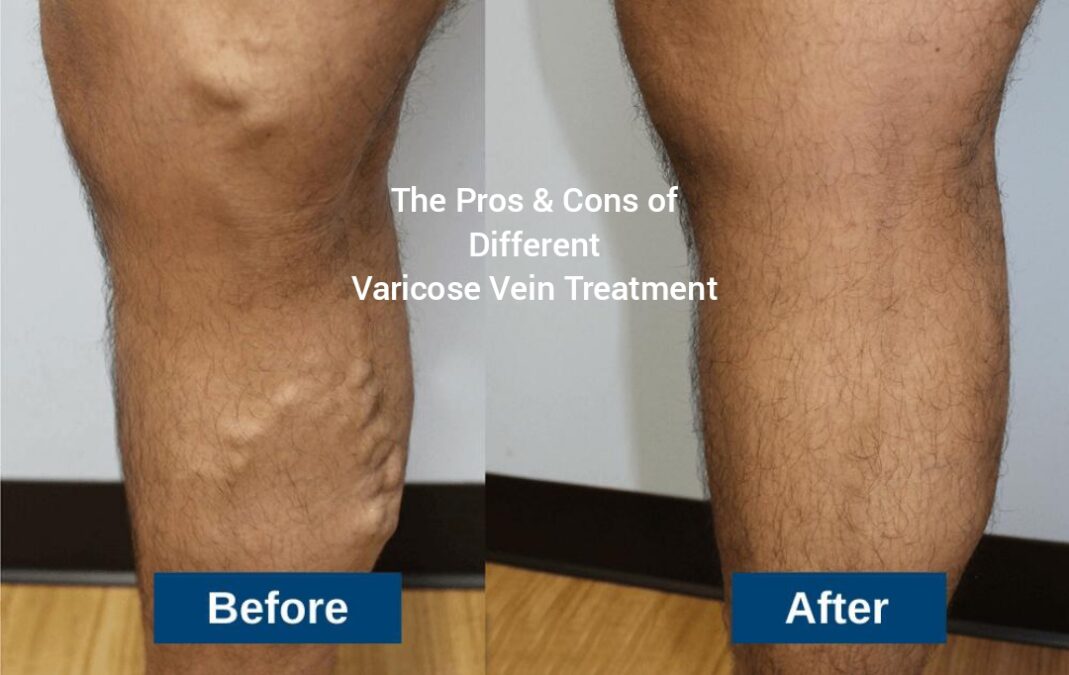Table of Contents
The Pros and Cons of Different Varicose Vein Treatment Options from a Cost Perspective
Varicose veins are a common condition that affects millions of people worldwide. They occur when the veins become enlarged, twisted, and swollen, usually in the legs. Varicose veins can cause discomfort, pain, and even cosmetic concerns for many individuals. This article will examine the pros and cons of different varicose vein treatment options, specifically focusing on varicose vein treatment cost, helping you make an informed decision.
The Pros and Cons of Different Varicose Vein Treatment Options
Below are the pros and cons of various varicose vein treatments:
Compression Stockings
Pros:
- Non-invasive: This treatment option does not require invasive procedures, eliminating the need for hospitalization or anesthesia costs.
- Widely accessible: Compression stockings are generally considered an affordable option for varicose vein treatment. Compression stockings can be easily purchased from pharmacies or medical supply stores, making them accessible to many individuals.
- No downtime: Since there is no need for surgery or recovery time, individuals can continue their daily activities immediately after wearing compression stockings.
Cons:
- Limited effectiveness: While compression stockings can help alleviate symptoms and prevent varicose veins from worsening, they may not provide a complete solution for everyone.
- Discomfort: Wearing compression stockings can be uncomfortable, especially during hot weather. They can feel tight and restrictive; some may find them difficult to wear consistently.
- Long-term commitment: Compression stockings must be worn consistently for optimal results. This means individuals must be committed to wearing them daily, which can be inconvenient for some.
Sclerotherapy
Pros:
- Minimally invasive: Sclerotherapy is a minimally invasive therapy option that involves injecting a sclerosing solution directly into the affected veins. It does not require surgical incisions, resulting in minimal scarring and a quicker recovery than surgery.
- Cost-effective: Sclerotherapy is generally a cost-effective treatment option, especially compared to surgical procedures. The expense varies depending on the number of veins being treated and the region where the procedure is performed.
- Outpatient procedure: Sclerotherapy is typically performed as an outpatient procedure, meaning hospitalization is unnecessary.
Cons:
- Limited effectiveness for more prominent veins: Sclerotherapy is most effective for minor to medium-sized varicose veins.
- Multiple sessions may be needed: As per the severity of the varicose veins, multiple sclerotherapy sessions may be needed to acquire the expected results.
- Potential side effects: While sclerotherapy is generally safe, there can be side effects such as bruising, swelling, skin discoloration, or allergic reactions to the sclerosing solution.
Endovenous Laser Therapy (EVLT)
Pros:
- Minimally invasive: EVLT is a minimally invasive procedure that requires only a tiny incision. This results in less scarring, minimal post-procedure pain, and a faster recovery than traditional surgery.
- Outpatient procedure: EVLT is typically performed on an outpatient basis, without the need for hospitalization and reducing overall treatment costs.
- Long-term results: EVLT has been shown to provide long-term relief from varicose veins, with many individuals experiencing a significant reduction in symptoms and improved vein appearance for several years.
Cons:
- Higher cost: EVLT is generally more expensive than compression stockings and sclerotherapy. The cost can vary depending on the number of veins treated and the region where the procedure is performed.
- Potential insurance limitations: Some providers may consider EVLT a cosmetic procedure rather than a medical requirement, resulting in limited coverage or higher out-of-pocket costs for patients.
- Potential side effects: While rare, EVLT can have potential side effects such as bruising, swelling, skin numbness, or nerve injury.
Conclusion (Varicose vein treatment options)
When considering the varicose vein treatment options from a cost perspective, it’s essential to ponder the pros and cons of each approach. Compression stockings offer an affordable and non-invasive option but may only provide a partial solution for some cases. Sclerotherapy is cost-effective and minimally invasive but may require multiple sessions for optimal results. Endovenous laser therapy (EVLT) provides long-term relief but is more expensive and has potential insurance limitations. Surgical procedures offer practical solutions for severe cases but come with higher costs and invasive nature.
Lastly, it’s essential to consult with a healthcare professional or vein specialist to get accurate information about the specific costs associated with varicose vein treatment options, as prices can vary depending on various factors.


